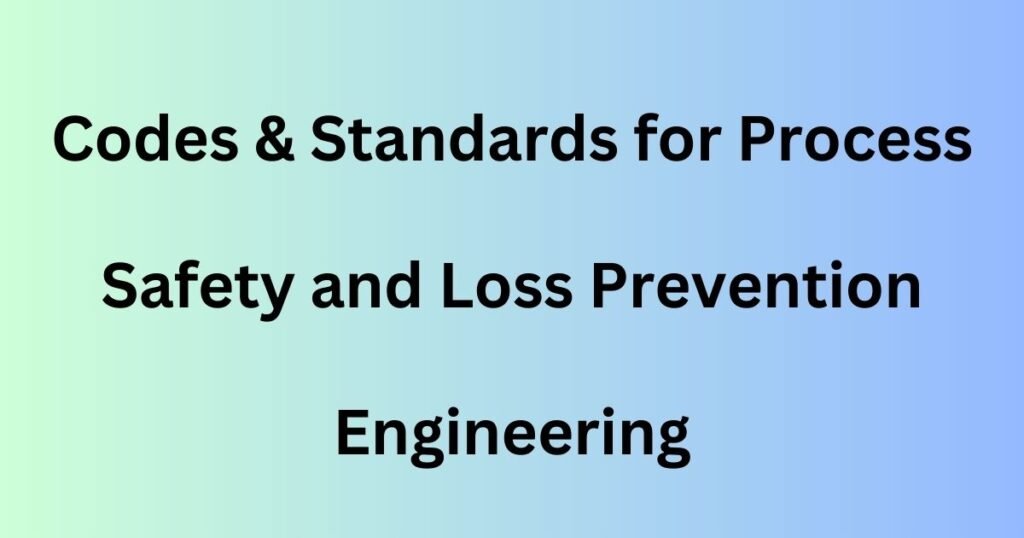🚀 Introduction
The role of a process safety engineer in 2025 is more critical—and more complex—than ever before. With industries such as oil & gas, petrochemicals, pharmaceuticals, and renewable energy embracing digitalization, software tools have become essential for accurate analysis, risk mitigation, and regulatory compliance.
Gone are the days when spreadsheets and hand calculations were enough. Today’s process safety professionals need smart, reliable, and integrated tools to handle the increasingly sophisticated demands of HAZOP studies, SIL analysis, QRA, dispersion modeling, and emergency planning.
In this article, we explore the Top 5 Process Safety Software Tools every engineer must master in 2025.
🛠️ 1. PHAST (DNV) – Process Hazard Analysis Software Tool
🔍 What It Does:
PHAST (Process Hazard Analysis Software Tool) by DNV is the gold standard for consequence modeling. It simulates the effects of hazardous chemical releases, including fire, explosion, and toxic dispersion.
🌟 Key Features:
- Jet fire, pool fire, BLEVE, and vapor cloud explosion models
- Toxic dispersion over terrain and weather conditions
- Risk contours for individual and societal risk
- Integrated with SAFETI for QRA
👨💼 Who Should Use It:
- Process Safety Engineers
- Environmental Engineers
- Risk Analysts
📌 Why It’s a Must-Have in 2025:
With updated weather models, GIS mapping integration, and enhanced 3D visuals, PHAST helps accurately predict hazards and supports robust facility siting and emergency planning.
⚙️ 2. PHA-Pro / PHAWorks (by Sphera) – HAZOP & LOPA Software
🔍 What It Does:
PHA-Pro (now PHAWorks RA Edition) is a comprehensive platform for conducting HAZOP, What-If, Checklist, FMEA, and LOPA studies.
🌟 Key Features:
- Drag-and-drop interface for quick node setup
- Automated recommendations and safeguards tracking
- Integrated LOPA module
- Custom templates and report generation
👨💼 Who Should Use It:
- HAZOP Facilitators
- PSM Coordinators
- Design Safety Engineers
📌 Why It’s a Must-Have in 2025:
As companies integrate process safety into digital project workflows, PHAWorks remains a core tool for facilitating collaborative, auditable hazard identification sessions.
🔢 3. TÜV Rheinland exSILentia – SIL Assessment & SIS Lifecycle Management
🔍 What It Does:
exSILentia is a leading tool for managing the entire Safety Instrumented System (SIS) lifecycle, from SIL assessment to SIL verification and validation.
🌟 Key Features:
- SIL Selection via LOPA
- SIS design verification
- Device reliability database (Failure Rate, PFDavg)
- Lifecycle management (IEC 61511 compliant)
👨💼 Who Should Use It:
- Instrumentation Engineers
- Process Control & Automation Professionals
- Functional Safety Assessors
📌 Why It’s a Must-Have in 2025:
With growing emphasis on functional safety compliance under IEC 61511:2016 Ed 2.0, exSILentia ensures your safety systems are properly designed and documented.
📊 4. SAFETI (DNV) – Quantitative Risk Assessment (QRA) Software
🔍 What It Does:
SAFETI is the industry’s premier software for conducting Quantitative Risk Assessment (QRA) in complex facilities like oil refineries, LNG terminals, and chemical plants.
🌟 Key Features:
- Probabilistic risk modeling
- Frequency analysis & event trees
- Individual and societal risk results
- Integration with PHAST models
👨💼 Who Should Use It:
- Risk Analysts
- Project Safety Consultants
- Process Design Leads
📌 Why It’s a Must-Have in 2025:
SAFETI’s powerful simulation engine and real-world accident frequency databases allow you to quantify risk exposure, support land-use planning, and justify ALARP measures.
🧠 5. Process Safety Office® SuperChems™ (AIChE / ioMosaic)
🔍 What It Does:
SuperChems is a chemical process simulation and reactive chemical modeling tool. It supports relief sizing, explosion modeling, and thermodynamic evaluations.
🌟 Key Features:
- Thermodynamic models for multi-component systems
- Reactive chemical simulation (runaway reactions, adiabatic models)
- PRV sizing and flare header design
- Combines AFT modeling capabilities
👨💼 Who Should Use It:
- Process Safety Engineers
- Chemical Engineers in R&D and scale-up
- Engineers involved in relief system design
📌 Why It’s a Must-Have in 2025:
SuperChems helps in safeguarding processes involving unstable chemicals and ensures compliance with API 520/521, DIERS, and OSHA PSM requirements.
📈 Comparison Table
| Software Tool | Core Use | Best For | 2025 Feature Highlight |
|---|---|---|---|
| PHAST | Consequence Modeling | Dispersion, Fires, Explosions | 3D Weather & GIS Integration |
| PHAWorks | HAZOP, LOPA | HAZID Sessions | Collaborative Workflows & LOPA Sync |
| exSILentia | SIL Study & SIS Management | Instrumentation & Safety Systems | Updated IEC 61511 Ed. 2.0 Compliance |
| SAFETI | Quantitative Risk Assessment | Facility-wide QRA | Societal Risk Heatmaps |
| SuperChems | Reactive Chemical Analysis | PRV/Flare Design, Runaway Reactions | Reactive System Modeling |
🌐 Upcoming Software Trends in Process Safety (2025 Onwards)
- AI-based Predictive Risk Tools (predict failure before it happens)
- Cloud-Based Safety Platforms (centralized access across global teams)
- AR/VR Training Modules for safety drills and process simulations
- Digital Twins integrated with live plant data for risk visualization
✅ Conclusion
In 2025, process safety engineering is evolving into a data-driven, software-supported discipline. Choosing the right tools can make the difference between reactive compliance and proactive risk prevention.
Whether you’re evaluating chemical release consequences with PHAST, performing a HAZOP with PHAWorks, or verifying SIL requirements with exSILentia, mastering these tools is no longer optional—it’s essential.
📣 Ready to Deepen Your Knowledge?
Stay tuned on www.nitinjadhav.com for tutorials, case studies, and tool comparison guides on:
- PHAST vs ALOHA
- SIL Verification Methods
- LOPA Automation Workflows
- How to Build a Digital Process Safety Toolkit


